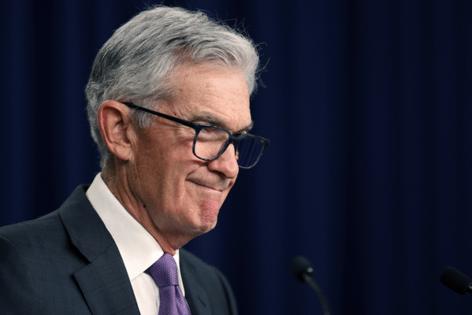Powell says it'll soon be appropriate to slow pace of QT
Published in Business News
The Federal Reserve is maintaining the pace at which it’s reducing bond holdings, even as officials say it will be appropriate to slow the pace of the unwind fairly soon.
The Fed has been winding down its holdings since June 2022 — a process known as quantitative tightening, or QT — and gradually increasing the combined amount of Treasury and mortgage bonds it allowed to run off, without being reinvested, to a total of $95 billion per month. That consists of $60 billion for Treasuries and $35 billion for mortgage bonds.
Chair Jerome Powell, speaking to reporters after the Fed’s decision Wednesday, said moves to eventually stop shrinking the balance sheet will be consistent will previously issued plans.
“The decision to slow the pace of runoff does not mean our balance sheet will shrink, but allows us to approach that ultimate level more gradually,” he said. “In particular, slowing the pace of runoff will help ensure a smooth transition, reducing the possibility of money markets experiencing stress.”
Market participants are left wondering how much more officials can shrink the $7.5 trillion portfolio of assets before worrisome cracks — similar to those seen in 2019 ahead of an acute funding squeeze — start to appear. For now, short-term funding markets have been stable and stress free, which offers considerable flexibility as Fed officials consider the path ahead for QT.
Usage of the overnight reverse repurchase agreement facility, or RRP — a barometer of excess liquidity in the financial system — climbed on Wednesday to $496 billion, the highest since March 13, from $447 billion the prior session.
Powell said that as the balance sheet shrinks and usage of the RRP stabilizes at or near zero, bank reserves — which currently stand at $3.6 trillion — would decline “pretty close to dollar for dollar” with its asset runoff.
His remarks echoed Dallas Fed President Lorie Logan, who said earlier this month that it will be appropriate to slow the pace of runoff once RRP balances approach a low level.
“Powell’s remarks suggest he is listening closely to Lorie Logan,” said Gennadiy Goldberg, head of U.S. interest-rates strategy at TD Securities. He said he now expects the Fed to release an updated Balance Sheet Normalization Principles and Plans at the May gathering.
The debate now heats up surrounding the precise level at which reserves shift from abundant to ample. Powell has said in the past the central bank would like to have a buffer above the lowest comfortable level of reserves in the system, but has provided no specific figure.
Some Wall Street strategists say that once the RRP is completely empty, short-term rates — from the Secured Overnight Financing Rate relative to fed funds — will start moving higher within the central bank’s target range. This is because banks will likely continue doing everything they can to hold on to those reserves.
However, tax season and the repayment of loans from the Fed’s Bank Term Funding Program stand to start draining bank reserves. While individual income-tax collection payments tend to come mostly out of the banks instead of money-market funds, there’s a risk that changes this year, according to Priya Misra, portfolio manager at JPMorgan Asset Management.
“We have tax season coming up,” Misra said on Bloomberg Television before Powell’s press conference. “That overnight reverse repo facility might get to zero in the next two months. What are they doing then? Are they getting close to tapering? They’re going to debate this, and if we get a September 2019 event, that’s a big shock to the system I don’t think is priced in.”
_____
©2024 Bloomberg News. Visit at bloomberg.com. Distributed by Tribune Content Agency, LLC.







Comments